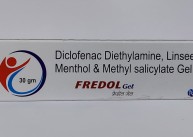Pantoprazole 40 mg
Medical uses
Pantoprazole is used for short-term treatment of erosion and ulceration of the esophagus for adults and children 5 years of age and older caused by gastroesophageal reflux disease. It can be used as a maintenance therapy for long-term use after initial response is obtained, but there have not been any controlled studies about the use of pantoprazole past a duration of 12 months. Pantoprazole may also be used in combination with antibiotics to treat ulcers caused by Helicobacter pylori.[10] It can also be used for long-term treatment of Zollinger-Ellison syndrome. It may be used to prevent gastric ulcers in those taking NSAIDs.
Mechanism of action
Hydrochloric acid (HCl) secretion into the gastric lumen is a process regulated mainly by the H(+)/K(+)-ATPase of the proton pump, expressed in high quantities by the parietal cells of the stomach . ATPase is an enzyme on the parietal cell membrane that facilitates hydrogen and potassium exchange through the cell, which normally results in the extrusion of potassium and formation of HCl (gastric acid).
Proton pump inhibitors such as pantoprazole are substituted benzimidazole derivatives, weak bases, which accumulate in the acidic space of the parietal cell before being converted in the canaliculi (small canal) of the gastric parietal cell, an acidic environment, to active sulfenamidederivatives. This active form then makes disulfide bonds with important cysteines on the gastric acid pump, inhibiting its function . Specifically, pantoprazole binds to the sulfhydryl group of H+, K+-ATPase, which is an enzyme implicated in accelerating the final step in the acid secretion pathway. The enzyme is inactivated, inhibiting gastric acid secretion . The inhibition of gastric acid secretion is stronger with proton pump inhibitors such as pantoprazole and lasts longer than with the H (2) antagonists.






